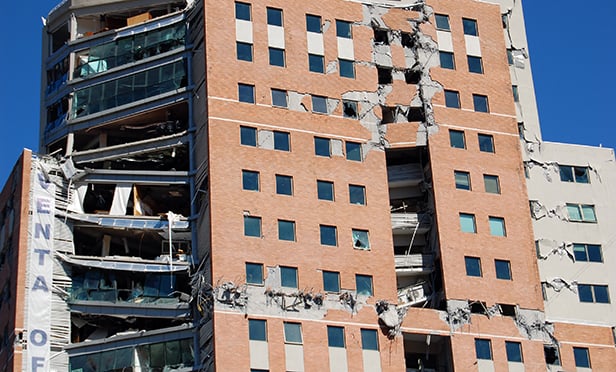Erika Morphy is co-editor of Debt and Equity Journal, from which this article is excerpted.
New York City—Nine months ago, it looked like the real estate capital markets had stabilized after the previous years' frenetic activity. Within the past six months, though, lenders surveyed by Debt & Equity Journal say activity is picking up again and note the market is reaching new levels in aggressive lending. No place is this more evident than in the office asset class.
"It's as insane as it used to be," David Rosenberg, managing director of the capital markets group at Meridian Capital Group in New York City says. "If anything, lenders are becoming more liberal regarding reserves."
It began about six months ago with purchases, Rosenberg explains, and has spread to refinancing and cash out transactions. "Now underwriting is more aggressive and borrowers are able to cash out big sums of money so they are willing to pay repayment facilities," he says.
One client recently refinanced a 4.4% five-year loan for an office building in Midtown Manhattan. "He locked in at 5.6%," Rosenberg recalls, "but because he could cash out the proceeds and put it to bed for 10 years at interest only, he ended up defeasing the loan at a discount."
Richard Swartz, a principal with Sonnenblick Goldman in New York City, says there are no signs of a slowdown in capital availability. For instance, he says, spreads continue to compress--a development that has been happening for a while, but has become even more apparent during the past six months.
Another sign that capital continues to flow into the market unabated, says Ron Shapiro, director of lender services at the Schonbraun McCann Group in New York City and Roseland, NJ, are entrances of brokerage firms into the lending space. "I know of some brokerage firms that have dipped into the lending market," he says. "They are either offering their own money or teaming up with a third party to do so."
Community banks are also becoming more aggressive with their products and lending, in some part due to innovations in the capital markets. Frank Baldassarre Jr., a senior vice president with Fox Chase Bancorp of Hatboro, PA, says he has been able to offer much more favorable terms to developers now that he has been accessing derivative-based products to support the loans.
"We are more creative in the way we are structuring our deals. Instead of offering just Libor or prime-based financing, we can use floors and caps to offer longer term fixed rates. We can customize loan solutions for our clients and compete with anybody that provides financing for larger real estate customers," he says.
Baldassarre says the bank recently offered construction financing to a developer. When it converted to permanent financing, it was at a 10-year fixed rate--a term that typically community banks will not do. "By accessing the derivatives markets, we are able to offer a 10-year, fixed-rate loan and swap that fixed rate for the variable rate we would prefer to have."
There are market changes in various submarkets that are giving lenders pause. For instance, says Swartz, "right now in the Dulles Corridor, given current market conditions, it would be very difficult to have a building financed on spec."
"We are cynical on speculative development right now," adds Ari Altman, vice president of mezzanine finance provider Huntington Capital Markets in Columbus, OH. "We would look for a healthy amount of pre-sales before we would take on a spec development." Another change in the market, Altman says, is a subtle shift in preference for medical office, as opposed to other sub-sectors in office space. "Right now, medical office projects seem to be the most attractive with a strong value creation story."
He tells of a recent deal the firm just financed--a 40,000 sf medical office building under construction that will be attached to the Middletown Regional Hospital in an Ohio town between Dayton and Cincinnati. Huntington Capital Markets financed the building, which was under a ground lease. The land was owned by the hospital. The total loan amount was $1.3 million, with mezz taking up 10%. The LTV was 85% at a 7.75 cap rate.
Want to continue reading?
Become a Free ALM Digital Reader.
Once you are an ALM Digital Member, you’ll receive:
- Breaking commercial real estate news and analysis, on-site and via our newsletters and custom alerts
- Educational webcasts, white papers, and ebooks from industry thought leaders
- Critical coverage of the property casualty insurance and financial advisory markets on our other ALM sites, PropertyCasualty360 and ThinkAdvisor
Already have an account? Sign In Now
*May exclude premium content© 2024 ALM Global, LLC, All Rights Reserved. Request academic re-use from www.copyright.com. All other uses, submit a request to [email protected]. For more information visit Asset & Logo Licensing.








